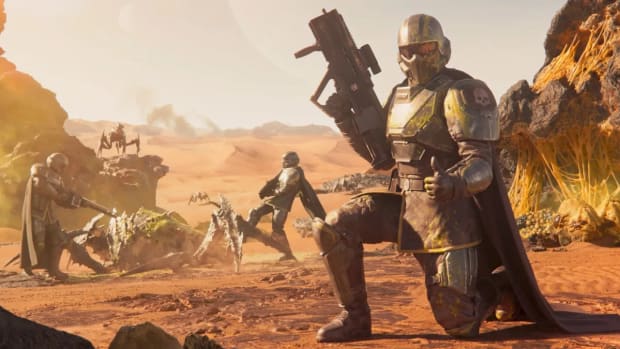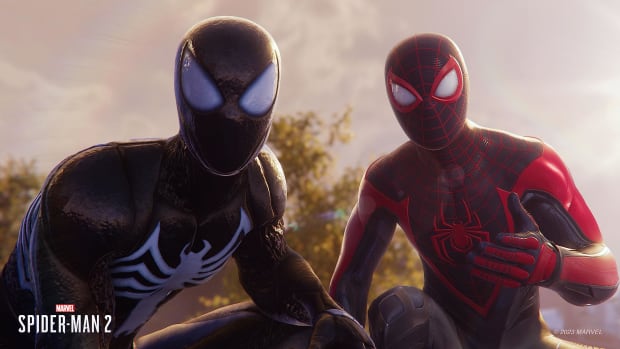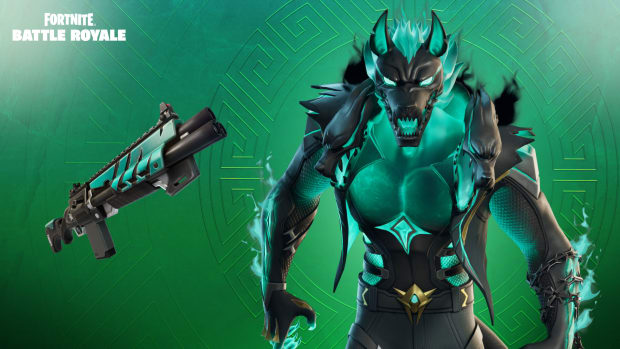
WoW — How to Race for World First
World of Warcraft: Racing to World First
Video games have proven that competition can manifest in a variety of ways, from head-to-head tournaments and leagues such as the Call of Duty of League or the Valorant Champions Tour to speed-running a game to have the fastest time on record in literally any game. Then there’s the race to world first, something wholly unique to Massively Multiplayer Online games like World of Warcraft. It’s such a unique experience that there is little else like it in the world of esports and it only comes around a couple of times a year and all of World of Warcraft takes notice.
What is a World First?
In MMOs like World of Warcraft, the pinnacle of play is participating in raids, long and dangerous encounters that have players fighting through waves of monsters and having to work together with their guilds to defeat powerful bosses. Most raids will have anywhere from 5-9 of these lethal encounters. Defeating these raid bosses earns players powerful equipment to become stronger and do it again but more effectively.
The Race to World First is just what it sounds like, who can be the first guild to defeat these bosses in the world and gain the prestige of being the best?
History of World First Raiding
The world of World First Raiding has changed a lot since the early days of World of Warcraft, which turns 20 years old later this year. When World of Warcraft was first released, the race to the world first happened in the dark. This was before the days of Twitch livestreaming, before the days of in-depth boss fight analysis as well as add-ons that help manage the mechanics of the fight.
Ragnaros, the final boss of the first multi-boss raid, Molten Core, took 154 days before a guild was able to bring him down. Throughout the next two decades, several guilds would rise and fall in prominence, such as Nihilum, who claimed the world first on C’thun, a 40-man raid boss that took 113 days to fall only after a hotfix from Blizzard nerfed him.
Nihilum would claim the next seven world first kills over the next year. The next prominent guild to rise in the age of the Wrath of the Lich King would be Paragon with six world first kills before a more modern-day name made its mark. Method is considered today to be the 3rd best guild in the world, but a shadow of their former self when they laid claim to 12 world firsts.
Though Method was the first guild to start streaming their progress on Twitch, the spectacle of the world's first race has become a much bigger phenomenon that is broadcast as a multi-day-long event. The broadcast is set up like any other competitive esport you’d expect to see with hosts, analysis, interviews with players and experts, and multiple views of the raid fights in progress.
Ready. Set. Raid.
When most players sit down in World of Warcraft to raid, they do so a couple of times and dedicate a few hours each time to do so. Normal people have families, they have jobs, and they have other hobbies and activities they enjoy.
But those are all put on hold when the World First Race begins for Team Liquid and Echo. These guilds pull 15-16 hour days for nearly 2 weeks as they grind against these World of Warcraft bosses to be able to call themselves the best and fastest raiders of the current tier.
Everything is planned out for them, from their meal schedule, to when they sleep and wake up in the morning. Everything is coordinated to spend as much time as possible progressing the bosses so you don’t lose any time to the other guild.
But each of these two legacy guilds doesn’t even enter the race when it first drops. As far as World First kills go, they only really care about the final boss. In the Amirdrassil World First Race, neither of the top three guilds got a first kill until the 7th boss, Smolderon.
For Team Liquid and Echo, neither team enters the raid when it first opens. For Amirdrassil they spent the first week doing Mythic splits. Running mythic dungeons over and over trying to get as much gear for their characters as possible, so when they do enter the race they’ll be positioned to take down the bosses already beaten by other guilds and then push the final few bosses.
To give a bit of context on how much gear can help in this regard, Smolderon was the first boss that was defeated by Team Liquid (and then Echo), instead of Instant Dollars, the guild that killed the majority of the earlier bosses first.
Team Liquid and Echo downed Smolderon in just over 50 attempts. Instant Dollar took over 100 attempts. The World First Guilds give up the early boss kills to make themselves stronger for the later boss pushes. Most of the early bosses get steamed rolled by Team Liquid and Echo thanks to their superior gear, knowing the strategies, and their skill and coordination.
The Race Before the Race
Most people only see the week to two weeks of the actual race. But like any competition where both sides push to cross the finish line first, the race begins long before the event itself. There’s an incredible amount of preparation that goes into preparing for an event like the world first race.
But for Echo and Team Liquid, the race isn’t just about waking up and logging into World of Warcraft to play a game. They’re putting on an entire event and using every available resource to give them an edge.
Tagzz from Team Liquid, who hasn’t played the game since before streaming the World First Race became a thing commented on the differences in preparation. “It was a totally different way compared to all of the support we have now[...]It was great, getting everyone here under one roof, getting them on one schedule, and having things you shouldn’t have to worry about handled for you. Like food is one of the biggest ones, having a personal chef in house, saves an hour a day.”
For Team Liquid, one of those resources is having a dedicated facility where they can gather all of their players together to play in person. This also allows them to have people on hand to stream for interviews and to talk strategy. But more than that, it saves on time which is the most precious resource in the race to world first.
Not having to worry about one person oversleeping, getting to their computer on time, taking bathroom breaks, or finding time to prepare food and eat, gives Team Liquid more time to push their progression.
This is where Echo is at a disadvantage compared to an endemic legacy esports organization like Team Liquid which has a dedicated facility thanks to fielding multiple rosters across many different esports.
Part of the challenge for Echo when planning an event like this, is figuring out what location they’re going to use and booking flights, room, and board for such a large crew far enough in advance without knowing exactly when the content will launch, or knowing how long it will take to finish.
The planning for these mythic splits is started three months in advance. Raid leaders and analysts have to figure out what classes are needed, who's playing them, and what groups are running. It even goes beyond the main raid roster because sometimes different fight strategies may call for different class combinations so some players could be preparing multiple characters.
The Amidrassil World First
Today the world's first race comes down to just two guilds; Team Liquid (formerly Complexity-Limit) and Echo Esports. For the past three years, these have been the two guilds fighting it out to claim the first kills of each new raid in World of Warcraft. As of the last raid, Amirdrassil the Dream’s Hope, Team Liquid has claimed three world first kills and Echo just claimed their fourth with Amirdrassil.
“The reason this race felt as good as it did was because of the competition - the most intense race yet.” Rogerbrown, Co-CEO of Echo Esports said in an interview with Esports Illustrated. The race lasted just short of two weeks with Echo claiming the world's first kill on Fyrakk the Blazing.
The final numbers for the last two bosses, which are far and away the most difficult of the entire tier, Tinder Safeswift and Fyrakk the Blazing, were 426 attempts and 464 attempts respectively for Team Liquid. While Echo took 399 attempts for Tindral and 340 attempts for Fyrakk the Blazing, earning them the World First Kill 7 hours before Team Liquid.
During the duration of the World First Race, the viewership across Twitch peaked at around 388,000 concurrent viewers with more than 25 million hours watched according to Esports Chart Data. The full event clocked in at over 306 hours of airtime. For comparison, the final Overwatch League Grand Finals reached a concurrent peak viewership of 157,000.
The most unique thing about the World First Race is that it’s not like the Grand Finals of the Overwatch League or the Apex Legends Global Series. It’s not sponsored by Blizzard and there’s no prize pool involved. These players are doing it for the legacy and prestige of being a part of the World First Raiding history books.
The World First Race requires passion and dedication, something Rogerbrown says is essential if you want to win. “Yeah, I would say having passionate people in the team and having the singular goal that that we have of competing and winning. That's literally it because, at the end of the day, the team is about the people inside the team. And when you have the experience from before, you are capable of achieving that. And it comes down to passion, motivation, preparation, and a lot of a lot of effort from everyone involved.”
What’s Next For Echo?
The next expansion for World of Warcraft, The War Within, was announced at Blizzcon and will be here sooner than expected. So what is next for the current World First Raiders? When does preparation for the next race begin? For Echo it already has.
“You can work non-stop 24\7 on improving when it comes to the game, but also when it comes to the business,” Scripe, Co-CEO of Echo Esports and Raid Leader of the Echo Guild for the past 3 years explains. He talks about how certain aspects are time-locked based on when Blizzard announces the next tier, but there is always data from the last raid to be analyzed.
“You could spend a lot of time, an endless amount of time just looking at the previous race and reflecting on the mistakes and speaking with players with analysts and getting feedback on what we can do better,” he explains. For example, having multiple backup characters geared during the mythic split phase allows them to experiment with different strategies on a per-boss basis as they need in the raid.
Rogerbrown adds that it’s all about being adaptable. “If you're not ready to adapt on the spot, then you're going to lose a lot of time[…]so now is the time where we reflect and look back and talk amongst the team as to how we can do better next time.”
Beyond just World of Warcraft, Echo also has plans for smaller content pieces. They would like to expand into World of Warcraft Classic or dip their toes back into Final Fantasy 14 which has a new expansion on the horizon as well.
Their plans are not yet sorted out and will depend on a few things yet to come. But Echo wants to try out some new games. They have a few ideas, but as Scipe points out, it depends on one very important factor — “What does the team want to do? Because the main thing is to have fun doing it. If people don't enjoy the content that they create, it's not going to be good content,” says Scripe.










